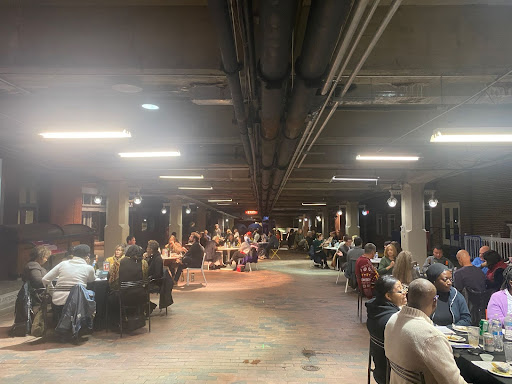Editor’s Note: All opinion section content reflects the views of the individual author only and does not represent a stance taken by The Collegian or its editorial board. Letters to the Editor reflect the view of a member of the campus community and are submitted to the publication for approval.
On Thursday, Sept. 30, the cover of The Collegian newspaper featured an illustration of a blue-haired police officer standing in front of a police vehicle, enticing readers to examine an article titled, “CSUPD mental health co-responder program launches.”
The article reports that the Colorado State University Police Department and UCHealth are partnering to send two-person teams — one behavioral health officer and one police officer — to intervene in situations the police deem capable of being de-escalated.
It should not be controversial except to the most obstinate of police supporters that such teams allow police departments to more effectively diffuse situations than sending teams of just police officers. But such an admittance requires a logical sleight of hand ignored by most, including journalists and media figures.
When journalists publish police reports verbatim, fail to report on police violence and aid in heroizing some particular cop, they are engaged in copaganda.”
Programs like these — and others instituted by the police — are still policing programs. Any de-escalation attempts by mental health professionals are still backed by the power of police officer partners to arrest, maim and kill.
The Collegian staff, in this story and in countless others that purport to report on the police, fail to (or choose not to) report with a critical perspective on actions and policies undertaken by law enforcement. This allows CSUPD and Fort Collins Police Services to portray themselves in the best possible light: This practice is called “copaganda.”
A portmanteau of cop and propaganda, copaganda seeks to legitimize or justify the police as an institution, often by uncritically highlighting the behavior of individual police officers engaging in some conduct determined to be a common good. Though police often utilize social media to do this by releasing statements on so-called criminals or posing with children at outreach events, journalists often find themselves playing the role of a “neutral” third party.
When journalists publish police reports verbatim, fail to report on police violence and aid in heroizing some particular cop, they are engaged in copaganda.
Though the media spent much time debating the value of defunding police, they actively aided the police and all supporters of the current racist order in convincing people to stay home and to respect police and policing.”
Engaging uncritically with the words or actions of police or failing to incorporate perspectives of those harmed by police violence — as is often done by journalists and media in general — is a key element of a broader campaign by police and by benefactors in our racist system to make these institutions seem natural and discourage any critique of police action.
It is far more difficult to criticize egregious police violence when cops are treated as gods within public discourse. Further, media reluctance to be seen as biased leads to the platforming of virulent nationalists who wish for the police to be more violent.
When the media attempts to balance any sort of perceived preference against police (or any hegemonic social structure like heteropatriarchy, queerphobia or capitalism), they do so by providing a larger platform to justifications for greater social violence to be rained down upon marginalized peoples.
United States police have faced a crisis of public opinion for more than a year. After the murder of George Floyd and the subsequent rebellion that sought to abolish or defund police to prevent further violence against Black people, police departments across the country have been fighting hard to protect their role as arbiters of racist social stability.
Countless canisters of tear gas; endless rounds of pepper-balls, marker rounds and bean bags; brain-injuring flurries of baton swings; overwhelming barrages of ear-splitting long-range acoustic devices; bum rushes by riot gear-clad officers — all of this left far too many traumatized, blinded, maimed, arrested and incarcerated.
After all this pain, police departments around the world engaged in symbolic acts of “solidarity” with protestors while often attacking protesters later. This co-option was aided by the media, who condemned the righteous anger by protesters while highlighting the empty gestures by police and downplaying or justifying police violence.
Though the media spent much time debating the value of defunding police, they actively aided the police and all supporters of the current racist order in convincing people to stay home and to respect police and policing. The crisis of summer 2020 was defused thanks to media.
Police kill, torture and imprison people the world over, and media institutions fail to provide balanced coverage by accepting police propaganda at face value. The Collegian editorial staff — along with Colorado State University, Fort Collins and all levels of government power — is guilty of serving as a key propagandist for the legitimacy of police terror. This must end.
Peter Krow
CSU employee
Send letters to letters@collegian.com. When submitting letters, please abide by the guidelines listed at collegian.com.







